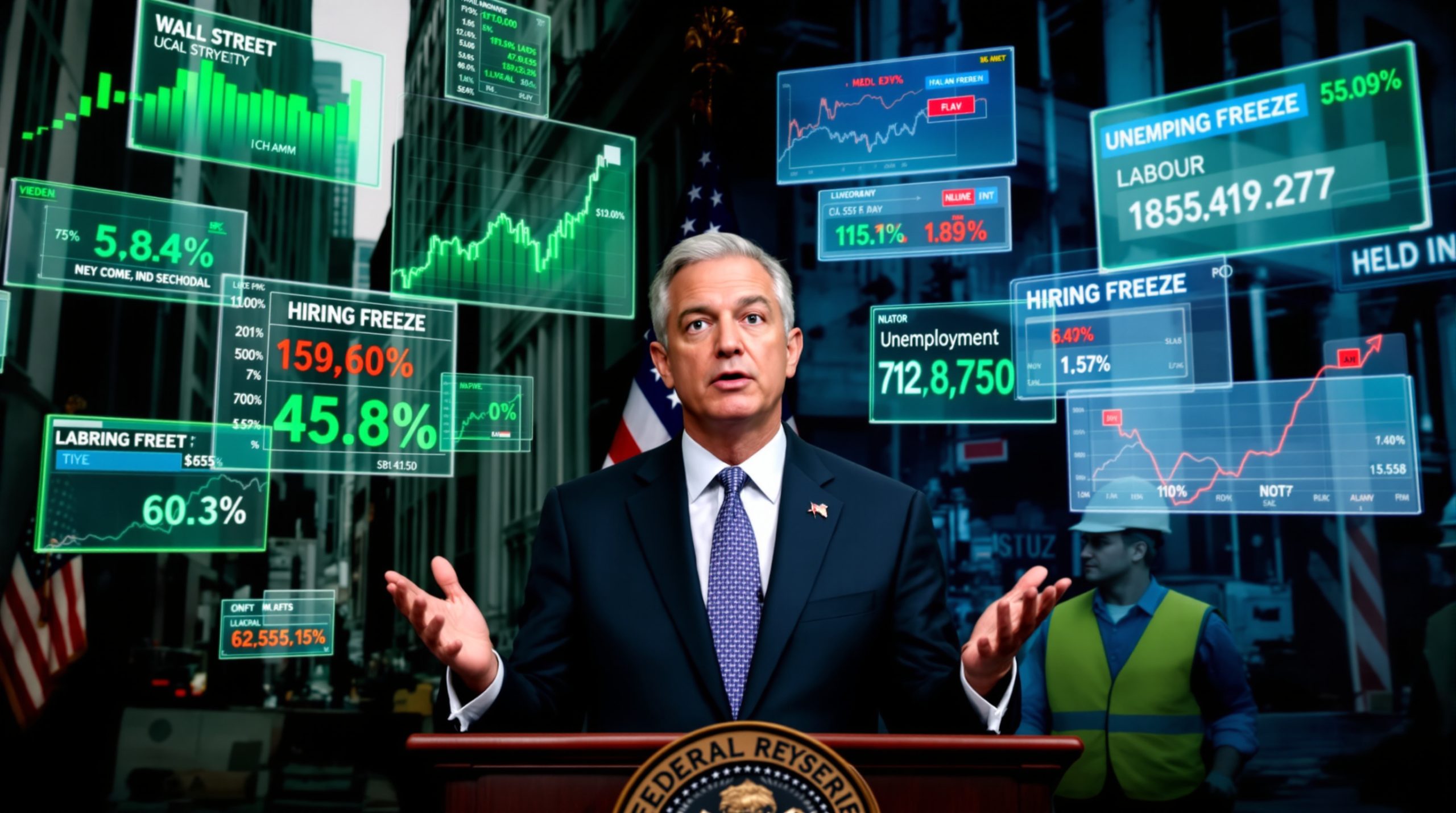## Why Are Rio Tinto and Glencore Merger Talks Back in Focus?
Recent developments in the mining industry have reignited speculation about a potential mega-merger between mining giants Rio Tinto and Glencore. This renewed discussion of a potential Rio Tinto and Glencore tie-up reflects a broader shift in market dynamics. Furthermore, these moves align with emerging industry evolution trends, prompting analysts to reassess the landscape.
The market is abuzz with activity as companies refine strategies and explore new avenues for growth. In addition, market participants are watching these shifts closely as they could signal more profound changes in the industry.
## Glencore's Strategic Restructuring
In a move that has caught market attention, Glencore recently completed an extensive internal reorganisation. This involved transferring more than $30 billion worth of overseas assets into a single Australian entity. According to April filings reported by the Australian Financial Review, the restructuring includes Glencore's global coal portfolio and South African operations.
Analysts believe the effort creates a consolidated structure that could facilitate asset separation. As a result, this approach complements current mining consolidation strategies in the sector.
“The restructuring appears deliberately designed to create optionality for the company,” notes mining analyst Sarah Thompson. “Housing these assets under one Australian umbrella gives Glencore flexibility for future divestitures or spin-offs.”
## Preparing for Strategic Options
Analysts at Citi have interpreted this reorganisation as preparatory groundwork. Their June 2025 report states: "This reorganisation appears to be preparatory work that could facilitate a fresh approach to Rio Tinto, creating a structure that would allow Glencore to separate its less desirable assets from its core metals businesses."
This strategy allows Glencore to:
• Isolate thermal coal operations into a separate entity
• Present a cleaner metals and trading business to potential partners
• Enhance regulatory flexibility in multiple jurisdictions
• Address ESG concerns that previously hindered merger discussions
## Revival of Previous Discussions
Speculation has re-emerged approximately eight months after earlier merger discussions stalled. Industry insiders attribute the deadlock to concerns over Glencore's significant coal exposure, which conflicted with Rio Tinto's strategy to exit fossil fuels.
“The timing of Glencore's restructuring, coming so soon after the previous talks ended, strongly suggests the company hasn’t abandoned its ambition,” explains Mark Thompson, resources editor at the Financial Times.
## What Would a Combined Rio Tinto-Glencore Entity Look Like?
A merger between these mining titans could create a diversified resources powerhouse with unmatched reach. The combined entity would represent one of the most significant transformations in mining industry structure in recent decades. Moreover, it offers potential for robust strategic growth.
### The "Metalco" Scenario
Investment analysts have dubbed the potential metals-focused business as "Metalco." Under this scenario, Glencore could spin off its coal operations, allowing Rio Tinto to acquire Glencore’s metals mining activities and profitable trading arm. According to Citi’s analysis, “Metalco would combine Glencore's sophisticated trading division with Rio’s operational expertise, creating a uniquely positioned resources giant.”
The combined entity would grant Rio Tinto access to:
• A trading division that generated $6.7 billion in EBITDA in 2023
• Copper assets with annual production exceeding 1.2 million tonnes
• Nickel operations producing around 110,000 tonnes annually
• Zinc and lead assets across multiple regions
• Enhanced exposure to metals vital for the global energy transition
## Synergy Potential
For a transaction to create shareholder value, analysts estimate that annual synergies exceeding $1 billion would be needed. These benefits would likely flow from:
- Improved operational efficiencies
- Supply chain optimisation and procurement savings
- Reduced corporate overheads
- Enhanced marketing capabilities via integration with Glencore’s trading arm
- More efficient capital allocation
This impressive potential illustrates how a Rio Tinto and Glencore tie-up could unlock value for shareholders. Transitioning further, the restructuring may provide opportunities in related sectors. For instance, insights from recent copper price insights suggest that favourable market conditions could bolster the economics of such deals.
## Strategic Copper Advantage
A particularly compelling aspect is the enhanced copper portfolio that a merger would create. Copper remains one of the most critical metals due to its role in electrification and renewable energy. The International Energy Agency forecasts that global copper demand will double by 2035, driven by renewable energy and grid modernisation.
Furthermore, alongside these outlooks come promising copper investment trends. Key copper assets include:
• The Mara project in Argentina, with reserves exceeding 11.8 million tonnes
• Glencore’s stake in Chile’s Collahuasi mine
• The Antapaccay mine in Peru, with annual production of approximately 150,000 tonnes
• Mount Isa operations in Australia with integrated facilities
In addition, this strategy would position the combined entity well among energy transition metals, critical for a low-carbon future.
## What Challenges Must Be Overcome for a Deal to Succeed?
Despite the strong strategic rationale, several challenges stand in the way of a merger. These include valuation disparities, environmental issues, and leadership dynamics. Each hurdle could complicate efforts to secure regulatory and shareholder approval.
### Valuation Disparities
For a merger to proceed, Rio Tinto would likely need to offer a premium to Glencore shareholders. Citi analysts note that Glencore shares have underperformed Rio Tinto’s by almost 30% over the past 18 months, leading to a significant valuation gap.
“Historical mining merger premiums have averaged 25-30% over the past decade,” explains analyst James Wilson. This premium expectation could be compounded by divergent views on commodity outlooks, the discount due to coal exposure, and differing perspectives on Glencore’s trading business value.
### Coal Conundrum
Perhaps the most significant obstacle is Glencore's extensive coal business. Coal contributed 38% of Glencore’s 2023 earnings, a misalignment with Rio Tinto’s coal-free strategy.
Rio Tinto exited coal in 2018 by selling its last mines for $2.7 billion to Yancoal. Therefore, any merger would likely require:
• Complete separation of Glencore's thermal coal business
• Legal ring-fencing to shield Rio Tinto from coal liabilities
• Detailed plans for transitioning metallurgical coal assets
• Thorough ESG analysis
“The coal issue is more than financial—it’s about corporate identity,” asserts ESG mining analyst Rebecca Chen, highlighting the inherent risks.
### Leadership Transitions
The outlook for a potential deal may also hinge upon leadership changes at Rio Tinto. CEO Jakob Stausholm has shown caution toward major consolidation moves. However, with expected leadership transitions in the next 18 months, newer management might be more inclined to pursue a transformative merger.
Industry expert Michael Richards notes, “Leadership succession often brings strategic pivots that could make a deal more attractive.”
## How Would This Merger Impact the Global Mining Landscape?
A merger of this scale would reshape the resources sector and possibly trigger broader consolidation. The combined entity’s influence could extend well beyond traditional markets.
### Industry Consolidation Implications
Since the commodities supercycle of the early 2000s, mega-mergers in mining have been rare. However, a merger could spark further consolidation as competitors seek scale advantages. Historical precedents like the BHP-Billiton merger in 2001 and the recent Newmont-Newcrest merger (valued at $19 billion) demonstrate this cyclical trend.
A merger might also prompt:
• Defensive moves by mid-tier producers
• Increased competition for high-quality assets
• Aggressive divestments of non-core assets
• Strategic shifts among trading houses
### Market Position Enhancement
The combined entity would be well placed across key commodities, including aluminium, zinc, nickel, and iron ore. Notably, it would control about 12% of global copper production. This robust presence would challenge major players like Chile’s Codelco and diversified miner Freeport-McMoRan.
Furthermore, enhanced scale could lead to improved pricing power and global market resilience. An in-depth merger impact analysis indicates that such scale is crucial for long-term success.
### Strategic Flexibility
Even if a full merger does not materialise, Glencore’s new structure provides strategic options. The company retains the flexibility to:
- Complete a full merger after separating coal assets
- Sell key assets to Rio Tinto or other majors
- Spin off non-core business units
- Execute targeted acquisitions
- Navigate complex regulatory landscapes more effectively
This potential Rio Tinto and Glencore tie-up could therefore drive multiple favourable outcomes regardless of actual consolidation.
## What Does This Mean for Investors?
Investors on both sides face a complex array of opportunities and risks. The strategic logic and potential synergies must be balanced with execution and regulatory challenges.
### Market Reaction Considerations
Investors should stay alert to key factors:
• Premium expectations: Merger premiums have historically hovered around 25-30%.
• Regulatory challenges: Antitrust reviews across jurisdictions could slow progress.
• Integration risks: The market remains sceptical of synergy claims, often discounting them by 30-40%.
• Coal separation: The timeline and structure for divesting coal assets will be critical.
A careful review of these factors is essential before assuming the deal’s full benefits. For additional perspective on potential combinations, consider insights from mining combination details.
### Strategic Rationale Assessment
Investors should assess several strategic elements:
• Complementary portfolios: Rio Tinto and Glencore offer diversified exposure from iron ore to copper.
• Enhanced production scale: The merger could boost production scale and market leverage.
• Trading expertise: Integrating Glencore’s trading operations might create new revenue streams.
• Optimised capital deployment: A broader asset base allows for more efficient capital allocation.
In short, a Rio Tinto and Glencore tie-up would generate significant investor interest despite inherent risks.
## The Strategic Logic of a Rio Tinto-Glencore Tie-up
Beyond the merger mechanics, the overarching logic focuses on future growth and resilience. A carefully executed combination will streamline operations and capitalise on global demand for commodities.
Ultimately, the prospect of a Rio Tinto and Glencore tie-up depends on striking a balance between ambitious strategic vision and execution challenges. Investors and industry players alike are watching closely, mindful of the complexities and opportunities that lie ahead.
Ready to Spot the Next Major ASX Mining Discovery?
Don't miss potential investment opportunities like a Rio Tinto-Glencore merger with Discovery Alert's proprietary Discovery IQ model that delivers real-time notifications on significant mineral discoveries across the ASX. Visit our discoveries page to understand how historic mining discoveries can generate substantial returns for well-positioned investors.




